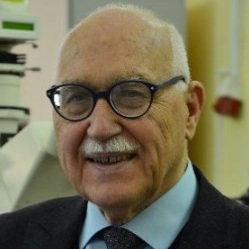Advanced Materials for Biophotonics Applications
A special issue of Materials (ISSN 1996-1944). This special issue belongs to the section "Optical and Photonic Materials".
Deadline for manuscript submissions: closed (20 July 2022) | Viewed by 32495
Special Issue Editors
2. Laboratory of Laser Molecular Imaging and Machine Learning, Tomsk State University, Tomsk, Russia
3. А.N. Bach Institute of Biochemistry, FRC “Fundamentals of Biotechnology”, Moscow, Russia
Interests: biological and medical physics; biophotonics; biomaterials, laser spectroscopy; laser and optical systems; optical and laser measurements; nanobiophotonics; terahertz dielectric spectroscopy and microscopy; LIBS; phototherapy
Special Issues, Collections and Topics in MDPI journals
Interests: biophotonics; biomedical optics; fiber-optic sensors; optical sensors; low coherent interferometry
Special Issues, Collections and Topics in MDPI journals
Special Issue Information
Dear Colleagues,
Biophotonics is a science about how light reacts with biological objects such as tissues, cells, and organisms. Recently, new materials have been playing a big role in the discovery of new aspects of biophotonics. It can be observed that progress in material science has a strong impact on the recent progress in biophotonics. Thanks to the application of new materials, new biosensors, imaging systems, and measurement assays can be delivered. Another group of materials used in biophotonics research is bio-mimicking materials, which are still growing and give us better phantoms of tissues each time.
Furthermore, it has recently become possible to make a group of materials which were inspired by biology. Thanks to these materials, we have bio-inspired photonics with new optical devices and solutions.
The connection between biophotonics and materials is strong, and we can observe that both biophotonics and materials have inspired each other, which can lead only to new solutions, bringing science and people a better understanding of nature.
Prof. Dr. Valery Tuchin
Prof. Malgorzata Szczerska
Guest Editors
Manuscript Submission Information
Manuscripts should be submitted online at www.mdpi.com by registering and logging in to this website. Once you are registered, click here to go to the submission form. Manuscripts can be submitted until the deadline. All submissions that pass pre-check are peer-reviewed. Accepted papers will be published continuously in the journal (as soon as accepted) and will be listed together on the special issue website. Research articles, review articles as well as short communications are invited. For planned papers, a title and short abstract (about 100 words) can be sent to the Editorial Office for announcement on this website.
Submitted manuscripts should not have been published previously, nor be under consideration for publication elsewhere (except conference proceedings papers). All manuscripts are thoroughly refereed through a single-blind peer-review process. A guide for authors and other relevant information for submission of manuscripts is available on the Instructions for Authors page. Materials is an international peer-reviewed open access semimonthly journal published by MDPI.
Please visit the Instructions for Authors page before submitting a manuscript. The Article Processing Charge (APC) for publication in this open access journal is 2600 CHF (Swiss Francs). Submitted papers should be well formatted and use good English. Authors may use MDPI's English editing service prior to publication or during author revisions.
Keywords
- Design and fabrication of:
- - Materials for active optical elements
- - Materials for passive optical elements
- - Bioinspired materials
- - Biomimicking materials
- - Nanoparticles for imaging and sensing







